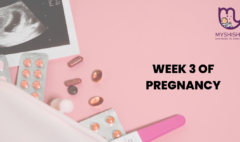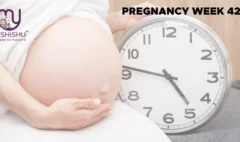Your Baby at 31 Weeks Pregnancy: Developmental Milestones and What They Mean
Your Baby at 31 Weeks Pregnancy: Developmental Milestones and What They Mean
Introduction
At 31 weeks, your baby is nearing the end of his third trimester, and they are growing rapidly. This is a time of growth and change, as your child’s organs continue to develop and their senses become more sophisticated. In this blog post we explore some of the developmental milestones your child is likely to reach at this stage and what it means for their future development.
Table of Contents
Physical development at 31 weeks
weight and length
• Rapid growth: At 31 weeks, your baby is making great strides. They are rapidly gaining weight and height, preparing to come into the world.
• Average measurements: The average length at this stage is about 15 inches and the average weight is about 3 pounds.
• Body wear: As your baby grows older, his body begins to fill out. Their noses are round and their limbs look more vital.
Skin
• Skin thickening: Once thin and luminous, skin is now firmer and more textured. This is a natural development, as the baby’s body is ready to adjust to the background.
• Lanugo: Tiny spiky hairs called lanugo begin to appear on the baby’s skin. These hairs help regulate body temperature and generally shed soon after birth.
Hair
• Hair growth: Your baby’s hair may be starting to grow, and it can be any color. Their hair colour is genetically determined.
• Hair changes: Some babies are born bald, while others have fuller hair. The amount and quality of hair at birth can vary greatly.
Nail
• Nail growth: By 31 weeks, your baby’s fingernails and toenails may have grown well beyond. This is a normal stage of development and can sometimes surprise new parents.
• Scratches: As the nails get longer, your child may begin to scratch their face or body. This is a natural tonic and can help calm them down. It is important to trim their nails to avoid friction.
Emotional development
- Vision: Your baby’s eyes are more sensitive to light and can now distinguish between light and dark. They start to pursue things with their eyes.
- Hearing: At this point, your baby’s hearing is well developed and he can hear sounds inside and outside the womb. They respond to loud noises by kicking or moving.
- Taste: Your baby can taste amniotic fluid, the liquid surrounding the womb. They like certain flavours more than others, and they can taste the foods you eat.
- Touch: Your child’s sense of touch is well developed, and he can feel the world around him. They respond to gentle touch through movement or tapping their feet.
- Smell: Your baby’s sense of smell is developing and they can recognize different smells. They can smell and even smell your food.

Brain development
• Cognitive development: Your child’s brain is growing rapidly, gaining new ideas every day. They learn to recognize patterns, solve problems and remember information.
• Language development: Your baby’s brain is also developing the neural connections necessary for language to grow. They start making grumbling noises and whispering.
Movements and shapes
• Movement: Your baby will become more active, and may start to hiccup or burp. Breathing and sucking are used.
• Reflexes: Your baby has many reflexes present at birth. These emotions help them survive and adjust to the new environment. Common features include the Moro reflex, muscle reflex, and suction reflex.
What these milestones mean for your child’s future
The developmental milestones your baby reaches at 31 weeks are critical to his future development. They help lay the foundation for their physical, mental, and emotional development. By understanding these key points, you can better assess your child’s progress and provide the support needed to succeed.
Tips to help your child develop
• Talk to your child: Talking to your child helps stimulate their language development and cognitive development.
• Read to baby: Reading to babies introduces them to new words and ideas.
• Sing to baby: Singing to baby helps to develop his hearing and rhythm.
• Play with baby: Playing with baby helps develop his motor skills and social skills.
• Provide a stimulating environment: A stimulating environment helps to enhance your child’s cognitive development.
Why does my child’s skin look different now?
Changes in the appearance of the skin and the appearance of Lanugo syndrome are common signs of puberty during this period.
What determines my child’s hair color?
Your child’s hair color is largely based on their genes.
How can I prevent my child from cutting himself?
Trimming baby’s nails regularly can help reduce the risk of scratching.
Conclusion
At 31 weeks, your baby is a growing and developing human being. They are making great strides in all aspects of their development, and are preparing to enter the world. Understanding the key developmental milestones your child can reach during this time will allow you to better appreciate their progress and give them the support they need to succeed











